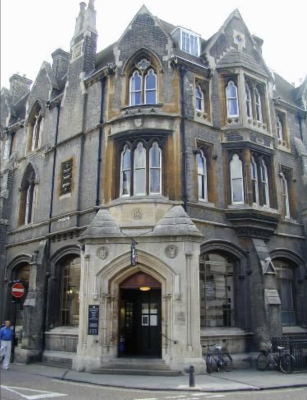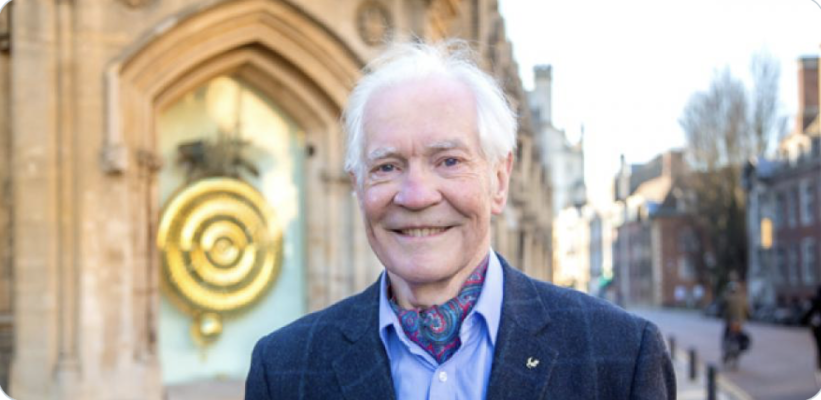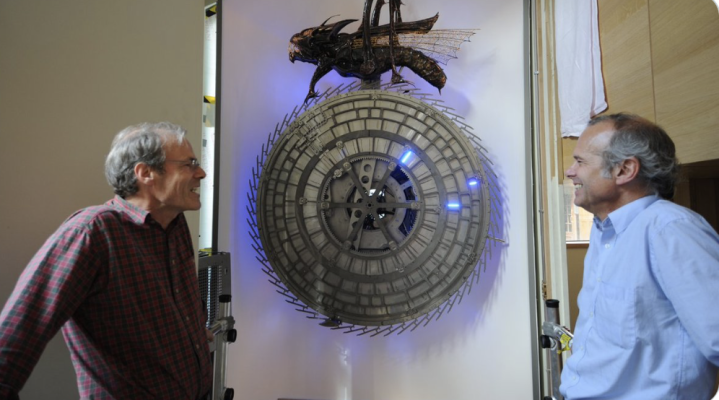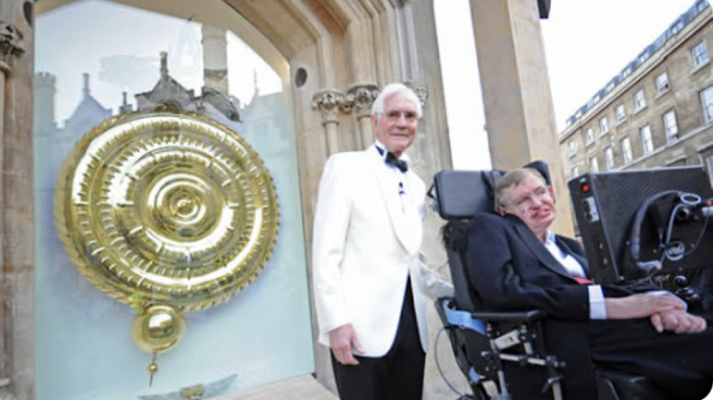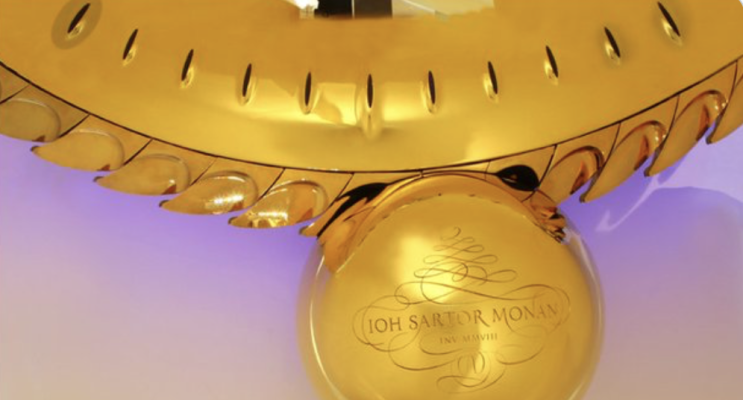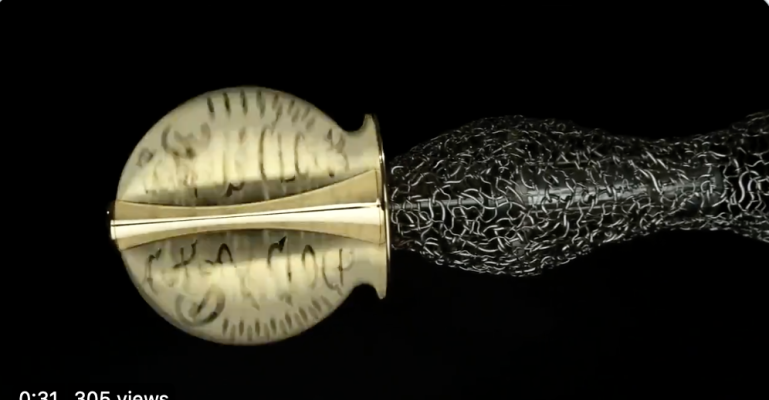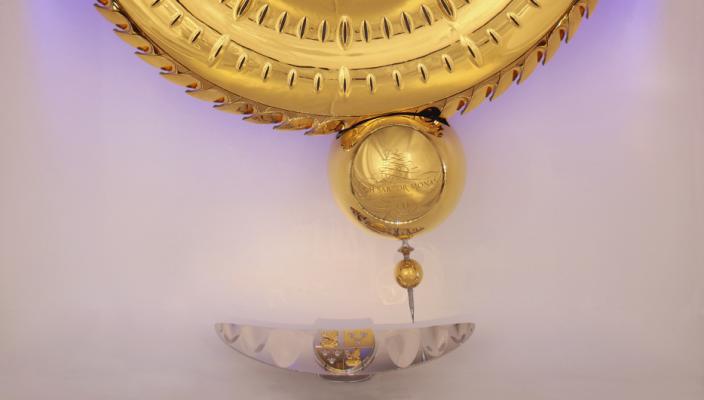Secrets of the Corpus Clock
The Custodian of the Corpus Clock, Dr Ewan St. John Smith, shares some little-known facts about the famous Chronophage.
Today is the Feast of Corpus Christi, which is the Name Day of our College.
One of my jobs on our Name Day is to provide a tour of the Clock to guests of Fellows and the College who attend our celebration. COVID-19 has put a stop to this event for the time being but here is a photo of me in a previous tour (see below for more photos).
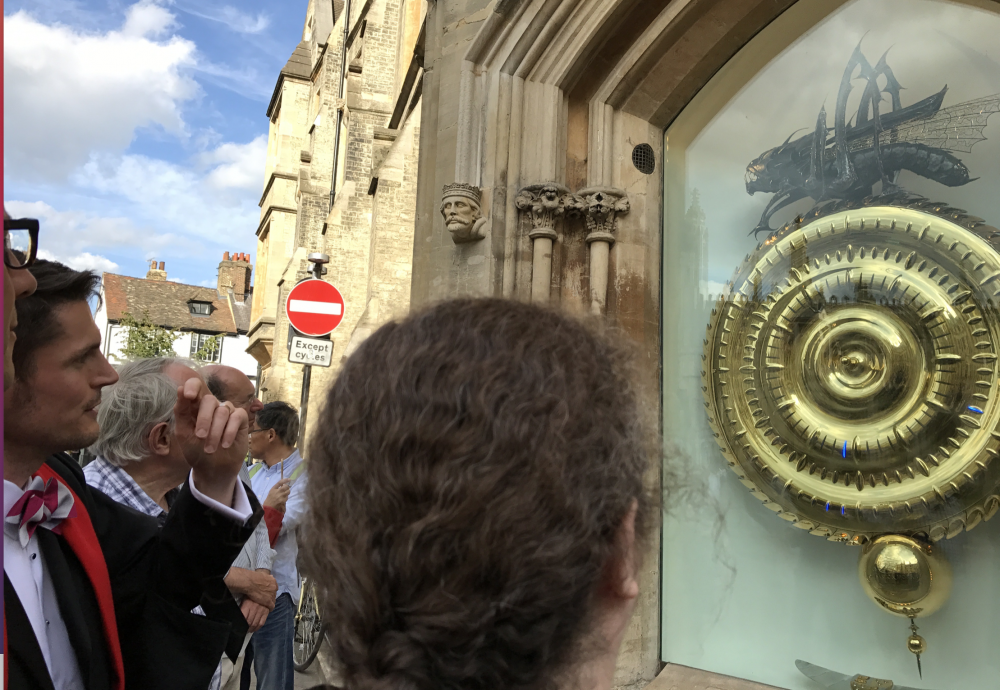 The Clock sits on what used to be the entrance to a Natwest Bank, a building built in 1866 (designed by architect Horace Francis) that originally housed the London County Bank.
The Clock sits on what used to be the entrance to a Natwest Bank, a building built in 1866 (designed by architect Horace Francis) that originally housed the London County Bank.
Natwest's lease ended in 2005 & it was decided that better student library provision was needed at College. The then library was sited under the Parker Library. Moving the Library out of that location would also lead to better facilities for students and researchers to access the Parker as well.
The old Natwest entrance couldn't just be bricked up due to planning restriction. What to do? Enter inventor & Corpus alumnus Dr John C Taylor OBE, inventor of the bimetallic thermostat control present in electric kettles and much more!
John is also an horologist. He designed the Corpus Chronophage Clock, which was then built by the Engineering firm Huxley Bertram. He gifted the clock to the College, and was the major benefactor to the new undergraduate library which takes his name.
But this is no ordinary clock.
Atop the wheel sits the Chronophage (time eater). The mouth opens at 30 seconds past each minute, snapping shut when the minute is over. It is an example of the grasshopper escapement mechanism invented in the 1700s by John Harrison, who also invented the marine chronometer that enabled sailors to determine longitude. An escapement is a mechanical linkage that checks and releases a clock’s gear train to move forward, advancing the clock's hands. The Corpus clock is believed to be the largest grasshopper escapement of any clock in the world. The escapement wheel is made from a single sheet of steel, plated in gold, created by a series of explosions in a vacuum. The radiating ripples that this creates allude to the Big Bang.
When the hour is struck, there is no chiming of bells, but rather the rustling of chains and the sound of a hammer striking a wooden coffin — perhaps a little offputting for those studying in the library behind the clock!
The clock has no hands or digital numbers; instead vernier slits are cut into the face. Three blue LED wheels (2,736 LEDs) are arranged behind the slits so that when the escape wheel moves, lights appear to dart in concentric circles and pause at the correct hour, minute and second. So although the lights give the illusion of flashing in sequence, they are actually exposed mechanically. However, this clock plays tricks: our perception of time is always altered by what is going on around us, and the clock's trickery adds to that.
The clock has 50 tricks, a special set is reserved for four days: John Harrison's birthday (25 March), John Taylor's birthday (25 November), New Year's Day and today, Corpus Christi Day. When playing these tricks, the clock gets a little out of time, but have no fear, it can run 10 percent fast, enabling a rapid realignment. This ability also allows the clock to cope with daylight savings time changes.
The pendulum has an inscription. Joh = Johannes = John; Sarto = Taylor; Monan = Monanensis = Isle of Man; Inv. = Invenit = to create; MMVIII = 2008. John Taylor from the Isle of Man made this in 2008. The pendulum points to are ten peaks on the rhodium dish at the bottom when playing certain tricks, a further homage to John Harrison and the accuracy achieved with his clocks centuries ago!
And of course, like all good clocks, there is a key, but this one is purely ceremonial. When spun, the key tells you to which clock it belongs. The top left is an image of the bimetallic thermostat for the kettle.
So, that's a little overview of what is truly an incredible thing, bang in the middle of Cambridge for everyone to see with plenty more secrets to share!

